HOW HEAVY SHOULD YOU LIFT? (“EGO LIFTING” VS. LIGHT WEIGHTS)
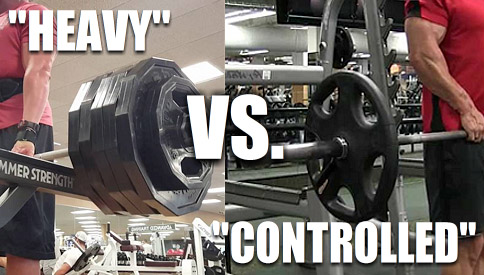
Which method of bodybuilding training is most effective for stimulating muscle growth over the long term…
1) Heavy “ego lifting” where the primary aim is to lift as much weight as possible and simply move it from point A to point B regardless of momentum.
2) Lighter “slow and controlled” lifting where the focus is placed on maximizing the mind-muscle connection and fully activating the muscle being trained.
You’ll hear arguments on both sides of the spectrum, but exactly how heavy should you lift in order to get the best results?
Let’s talk about it…
Heavy “Ego Lifting” Vs. Slow And Controlled Form
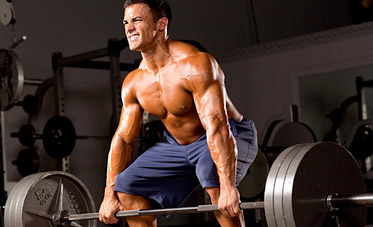
Just like with most bodybuilding training topics, the real answer to the question of “heavy weight vs. light weight” lies somewhere in the middle rather than being at one extreme or the other.
Whether you’re lifting very heavy weights with looser form or lighter weights with highly controlled form, there are benefits and drawbacks to both approaches when it comes to stimulating muscle growth while preventing injuries.
The benefit of lifting lighter weights with a slower rep cadence is that you’ll still be able to effectively stimulate hypertrophy this way, but you’ll be doing it while also placing a lot less stress on your joints and connective tissues.
The downside is that training too light and too slow won’t be ideal for generating the strongest muscle building response from the body possible.
Research has shown that muscle fiber recruitment and growth is maximized when the concentric portion of the rep (otherwise known as the “positive” phase or “lifting” phase) is performed as hard and fast as possible, and a “super slow” lifting approach simply won’t allow you to accomplish that.
In other words, lifting very light weights using highly controlled form will decrease your risk of injury but will likely produce a bit less muscle growth and strength gain overall.
Lifting very heavy weights with more momentum has the opposite effect.
By using heavier loads and performing the concentric portion of the rep with maximum force, muscle fiber recruitment will be maximized and you’ll likely build muscle and gain strength at a faster pace this way.
However, the major downside (and something that isn’t discussed nearly as often as it should be), is that training with maximal loads and using a lot of momentum will also produce significantly more wear and tear on your joints and connective tissues.
Not only does “ego lifting” produce a greater cumulative stress over the long term, but it also increases the risk of a sudden injury occurring if your form was to momentarily slip up on a particular set.
It’s not a guarantee that this type of lifting will injure you, but across the population there’s no question that a super heavy style of training is far riskier, especially if performed year round.
This is particularly true of younger newbie lifters who lack training experience and don’t have an initial size and strength foundation in place first.
They’ll often just take the whole “ego lifting” approach at face value, load up the bar with as much weight as they can possibly handle using a smaller range of motion, sloppy form and plenty of “cheat reps”, and very quickly end up hurting themselves.
Always Focus On Building Muscle For The Long Term
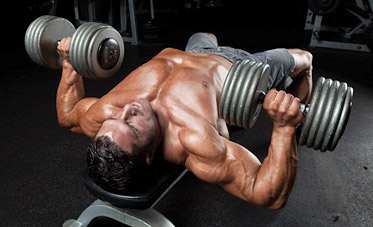
The key thing that many lifters fail to recognize is the fact that weight training is NOT a quick fix; it’s an life long endeavor.
They simply ask “how heavy should I lift?” and want to know what method of training is going to build as much muscle as possible as quickly as possible, without taking the longer term into account.
Hard training and proper nutrition isn’t something you’ll merely be doing for the next few months or even the next few years…
If you want to get into great shape and stay in great shape permanently, this is something you’ll be doing for literally decades to come.
But start doing super heavy bench presses every week by dropping the bar to your chest using pure gravity and then pressing it back up using sloppy form and a lot of momentum…
Heavy lateral raises by swinging the dumbbells up and down without any regard for those delicate shoulder joints…
Wide grip dips or heavy pull ups using maximum weight where the only goal is to get your body from point A to point B…
Bent over rows with your lower back in a rounded position, heaving a fully loaded bar around in a ballistic fashion…
And trust me, this stuff will add up over the long term.
You might be fine for a year or even several years, but all that heavy lifting performed week in and week out is eventually going to take its toll.
Even lifters who don’t use a heavy “ego lifting” approach and train on the more moderate side still usually end up experiencing an injury of some kind throughout their training career.
Preventing injuries isn’t purely a matter of proper warms up, good training technique and regular deloads (though these things are very helpful); there’s also just a general wear and tear principle at play that automatically comes with intense resistance training being performed over the long haul.
So, even if lifting very heavy weights was to produce slightly faster results, it still doesn’t automatically make it the best approach for building muscle since the risk/reward factor always has to be taken into account.
You’ve got to ask yourself, “how do I effectively stimulate this muscle for growth?” and “how do I do it in a way that will be sustainable over the long term?”
Keep in mind that we also have several studies comparing lighter weight/higher rep protocols versus heavier weight/lower rep protocols, with comparable muscle building results in both cases.
And, we also know anecdotally that a great physique can certainly be built without using extremely heavy weights and maxing out every time you go into the gym, so why take the risk?
As long as volume is equated for, there’s no clear cut answer as to just how necessary “heavy lifting” really is in the first place anyway assuming your primary goal is to build muscle.
Remember that you’re only as strong as your weakest link, and if you injure a shoulder, knee, your lower back etc., those injuries can sometimes be a one-way street and give you issues for literally the rest of your training career.
Heavy Weight Vs. Light Weight: Why A Moderate Approach Is Best
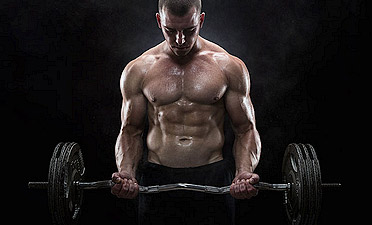
If your goals in the gym are purely strength related, or if you just enjoy really heavy lifting for the sake of it and you’re aware of the risk, then that’s up to you.
Or, if you’re trying to work around an injury of some kind or maybe you don’t have access to heavier weights, going with light resistance and very strict form is also an option.
Either of these approaches will ultimately be effective for building muscle as long as you’re applying progressive overload and your nutrition is on point.
However, for the majority of trainees in the majority of situations, a middle ground between the two will usually be the best way to make ongoing gains in muscle size and strength over the long term.
This means choosing a weight that still feels decently heavy for you relative to the rep range you’re using and training with solid form/technique, but while still allowing yourself to move naturally throughout the exercise.
Perform the concentric portion of the rep with maximum force while still remaining in control of the weight and actively thinking about the muscle you’re trying to target, and then lower the weight for a 2-3 second count.
You don’t need to perform super slow negatives, but there is value in actively resisting the weight on the way down (rather than just letting gravity do all of the work) in terms of producing additional muscle damage and preventing joint stress.
This “moderate” approach to lifting will still give you the muscle building benefits of using a reasonably heavy weight, but while allowing you to fully activate the targeted muscle you’re trying to train and minimizing your risk for injury at the same time.
Here are a few examples of what this would look like…
How Heavy Should You Lift? The Bottom Line
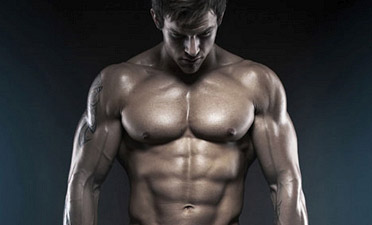
So, what’s the bottom line on the “ego lifting” vs. “slow/controlled form” debate?
Going to extremes is almost never the best long term approach to building muscle, and the issue of training with very heavy weight vs. light weight is no exception.
Lifting very heavy weights with loose form may be effective for stimulating size and strength gains, but will produce more wear and tear on your joints and increase your chances for injury over time.
Lifting very light weights with highly controlled form will greatly reduce that injury risk, but likely won’t be optimal for building the very best physique possible.
How heavy should you lift?
If you want to build muscle effectively for years to come and reach your genetic potential while keeping your joints healthy, a middle ground approach will be best for the majority of your training sessions.
If you found this article helpful, make sure to sign up for your FREE custom fitness plan below...




